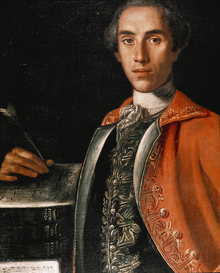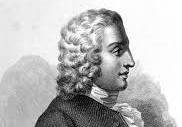

Leonardo Leo
Born: 1694Died: 1744
Education: the Conservatorio della Pietà dei Turchini at Naples in 1703, and was a pupil first of Francesco Provenzale and later of Nicola Fago
Career: He held various posts at the royal chapel, and continued to write for the stage, besides teaching at the conservatory.
Leonardo Leo was a Neapolitan composer widely regarded during his lifetime as the heir apparent to Alessandro Scarlatti and among the last major figures to emerge in the Italian Baroque. Leo was sent to Naples at age 15 to study with Nicola Fago. In 1712, Leo scored his first triumph when his the sacred cantata S Chiara, o L'infideltà abbattuta was heard at the Royal Palace in Naples. Leo was named assistant organist at the Royal Palace and maestro di cappella to Marchese Stella. Leo's first opera, Il Pisistrato, premiered at the Teatro di S. Bartolomeo in Naples on May 13, 1714, and Leo's career in opera continued to the end of his life. Altogether, he is believed to have written or contributed to some 70 operas. All of these works are now obscure and many are lost; however, George Frideric Handel thought enough of Leo's 1729 opera Catone in Utica to incorporate some of the numbers in a pasticcio version of Catone for London at the King's Theater in 1732. When Alessandro Scarlatti died in 1725, Leo was named principal organist to the Royal Chapel. In 1728, composer Francesco Durante became head of the Conservatorio dei Poveri di Gesù Cristo in Naples, resulting in an interesting rivalry between Leo and Durante. Leonardo Leo was grounded in seventeenth century practice, making use of figured basses and hardy, rigorous counterpoint, even in his comic operas. Although Durante was Leo's senior by ten years, Durante's style has much in common with his youngest contemporaries in that it is more directly melodic and set over a simpler kind of accompaniment. Musicians in Naples during this time fell into two distinct camps: the "Leists," who upheld established Baroque practices, and the "Durantists," who were in sympathy with newer forms. Belonging to the latter camp was Durante's student Giovanni Pergolesi, whose formal innovations would soon wreak havoc on the Baroque as a whole. By 1730, Leo was serving as vice maestro of the Royal Chapel in Naples and finding it hard to get his serious operas produced, although his comic operas were still in demand. Sacred music may be found in all of Leo's periods of activity, but it appears that his major efforts in this realm appeared in the years after 1730, beginning with the Oratorio per la SS Vergine del Rosario. Leo also took an increased interest in teaching, serving as vice maestro of S. Maria Della Pietà dei Turchini and publishing several treatises. Among Leo's students were composers Niccolò Piccinni and Niccolò Jommelli, both of whom also studied with Durante. In 1739, Leo composed his Miserere for double choir and organ, and this work has served as his signature piece ever since. On January 25, 1744, Neapolitan Royal Chapel maestro di cappella Domenico Sarro died and Leo, then in his 32nd year of service to the chapel, was finally named to this position. Leo would enjoy it for exactly nine months, as his premature death at age 50 intervened. In his last years, Leo instituted reforms in Neapolitan church music that he'd hoped would help preserve the older, more respectable forms of sacred composition. But this was ultimately fruitless as a measure to stem the rising tide of Classicism and galant style. Nonetheless, Leo's Miserere has proved enduring and the opera overtures Leo composed are viewed as important stepping stones in the early development of the symphony.

